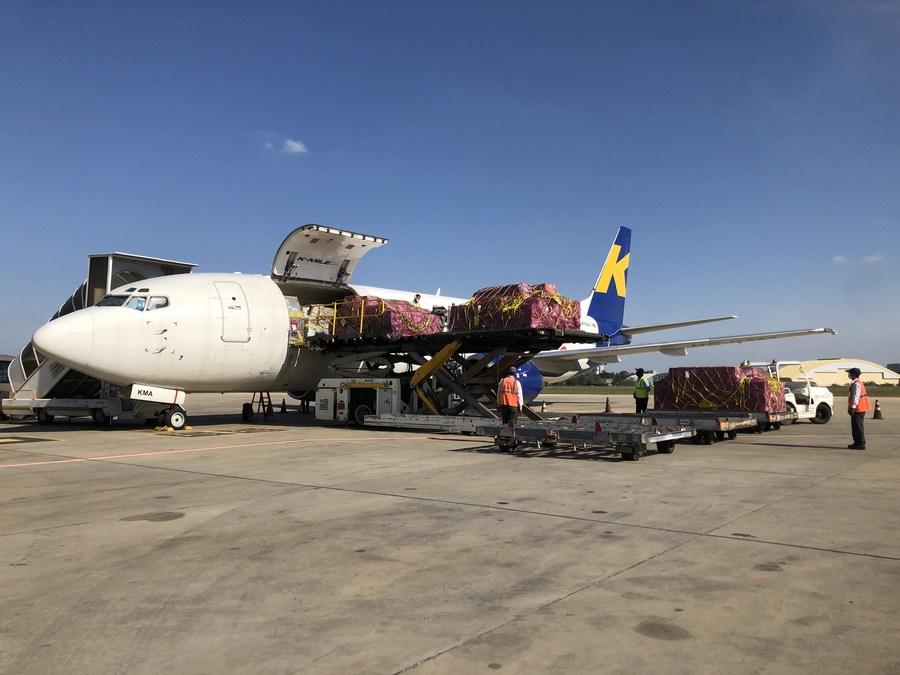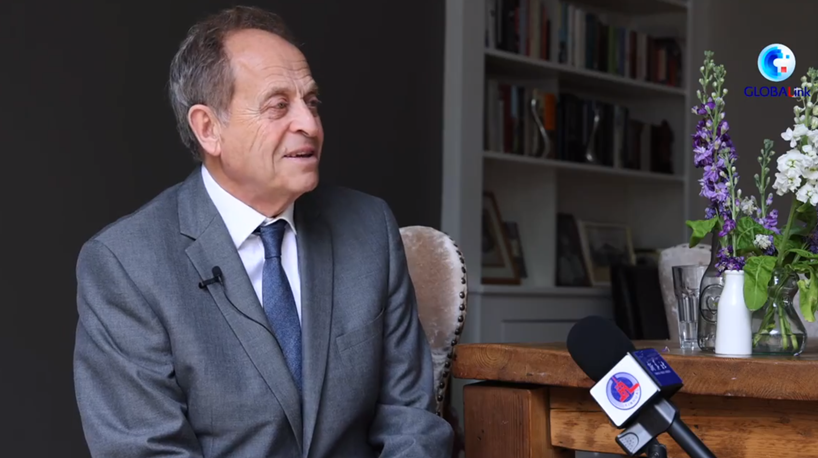
Garment workers make clothes at a factory in Phnom Penh, Cambodia, on Dec. 17, 2021. (Xinhua/Wu Changwei)
Cambodia's total exports rose 34.5 percent year-on-year during the January-May period this year, and traditional growth drivers, especially garments, travel goods and footwear products, continued to expand, while newer manufacturing industries, such as electrical and vehicle parts, are also emerging.
PHNOM PENH, July 1 (Xinhua) -- High COVID-19 vaccination rates and free trade agreements (FTAs), namely the Regional Comprehensive Economic Partnership (RCEP) and the Cambodia-China FTA (CCFTA), have been helping boost Cambodia's economic recovery, said a World Bank economic update report released on Thursday.
Cambodia's economy will grow by 4.5 percent in 2022 and around 6 percent annually for the medium term, the report said. However, rising global energy and food prices are expected to fuel the country's inflation to 7.2 percent this year, up from 3.5 percent last year.
The Southeast Asian nation has so far administered COVID-19 vaccines to almost 15.1 million people, or 94.3 percent of its 16-million population, and China's Sinovac and Sinopharm vaccines have been widely used in the kingdom's immunization program.

An adolescent receives her first dose of Sinovac COVID-19 vaccine in Phnom Penh, Cambodia, Aug. 1, 2021. (Photo by Ly Lay/Xinhua)
Buoyed by its high vaccination coverage, Cambodia has resumed all socio-economic activities and reopened its borders to fully vaccinated travelers without quarantine since November last year.
"The government's living with COVID-19 strategy has allowed Cambodia to reopen, enabling economic recovery," Maryam Salim, World Bank country manager for Cambodia, said during the launch of the report.
"However, the road ahead remains unclear. Rising energy and food prices due to the war in Ukraine are imposing additional burdens on the poor, and this will slow the pace of poverty reduction," she said.
According to government's data, the country's total exports were worth 9.41 billion U.S. dollars during the January-May period this year, up 34.5 percent year-on-year, and traditional growth drivers, especially garments, travel goods and footwear products, continued to expand, while newer manufacturing industries, such as electrical and vehicle parts, are also emerging.
World Bank senior country economist Ly Sodeth said Cambodia's new investment law, together with RCEP and the CCFTA, has helped boost the country's investment and trade.
"We look at RCEP as the longer benefit ... Cambodia is the third country that will gain the most from RCEP after Vietnam and Malaysia," he said. "So, Cambodia potentially benefits a lot from RCEP."

Staff members unload cargos from a plane at the Phnom Penh International Airport in Phnom Penh, Cambodia, Dec. 31, 2021. (Photo by Van Pov/Xinhua)
For the CCFTA, Sodeth said Cambodia has enjoyed the export of products, especially agricultural commodities such as cassava, mango and banana, to China with tariff concession.
Cambodian Ministry of Commerce's undersecretary of state and spokesman Penn Sovicheat said RCEP and the CCFTA, both took effect on Jan. 1 this year, are the key factors for boosting the country's economic growth.
He said China is a huge market for Cambodia and that investment and trade ties between the two countries have continued to rise despite disruptions caused by the pandemic.
"Under the two FTAs, we are confident that Cambodia's exports to China and other RCEP member countries will be bigger, especially the exports of potential agricultural produce such as rice, bananas and mangoes, industrial products, and processing goods," he told Xinhua.
Senior economist Ky Sereyvath, director-general of the Institute of China Studies at the Royal Academy of Cambodia, believed that high vaccination rates and the FTAs are the boosters for Cambodia's investment and trade growth with other countries.
"RCEP has served as a catalyst for Cambodia, regional and global economic growth and undoubtedly all participating countries will benefit from it at different levels," he told Xinhua. "I think this mega-regional pact will become a new center of gravity for global trade in the future."■












